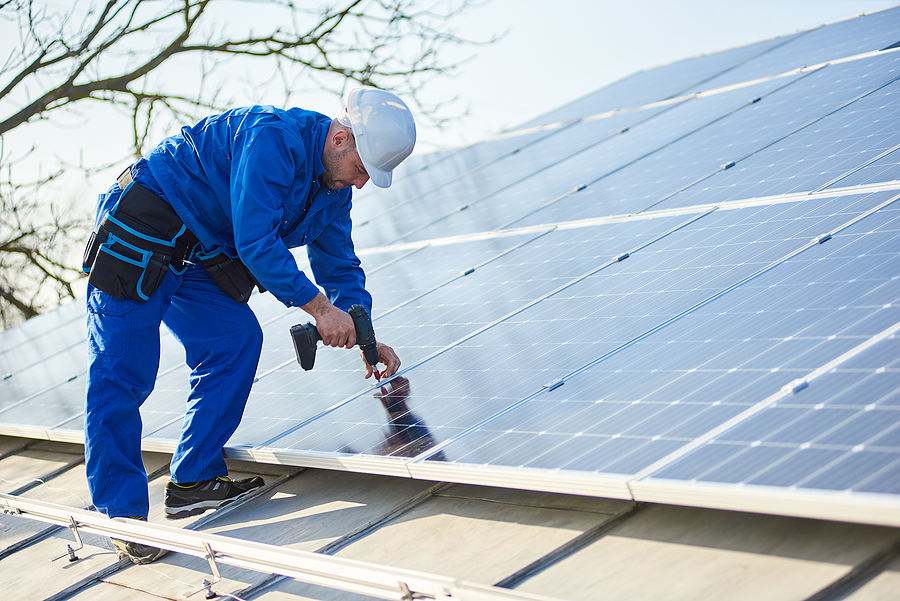Thinking About Installing Solar Panels?

Solar panels are hot.
The U.S. solar panel industry broke records in 2020, according to the Solar Energy Industries Association and Wood Mackenzie. The industry added 19.2 gigawatts of new capacity during 2020, a 43% jump from 2019.
Before you think about jumping on that bandwagon, here are some things to consider.
Options for installing solar panels
You have two choices when installing solar panels in your home: buying or leasing.
Leasing is much cheaper up front because installers generally won’t charge for installation or the panels themselves. Repairs and maintenance are usually included, too.
The trade-off is that you’ll have 20 years of lease payments, which cuts into the electricity savings.
Buying solar panels has a significant up-front cost but, in the long run, typically costs much less than leasing panels. For most homes, after tax savings (more on that below), solar panels cost between $20,000 and $40,000 to install. (The highly publicized Tesla solar roof is considerably pricier.) Adding a storage battery for homeowners who want to completely disconnect from the grid can mean an additional $5,000 or more.
Solar panels are designed to last 20 years with minimal or no maintenance, so ongoing costs should be negligible. Most carry long warranties. And whether you buy or lease, most homeowners’ insurance policies cover roof-mounted solar panels at no additional cost. (Check your policy to be sure.)
Tax incentives for solar panels
There are numerous federal—as well as state and sometimes local—tax incentives for installing solar panels. Some energy utilities also offer incentives.
The catch: Some rebates and tax incentives may only be available to homeowners who buy, not lease, their systems. Depending upon how a system is leased, the leasing company may receive those savings, and they may not pass some of those savings along.
Without all the tax incentives, the payback period will be significantly longer.
Solar savings and payback periods
How long will it take for electricity savings to offset the cost of your solar energy system?
Several factors can affect that calculation:
- Cost of electricity in your area
- Average amount of electricity you use
- Amount of sun your rooftop receives daily
- Location of your home
- Cost of the solar system
Many online calculators are available to help you estimate this period for your home, and a solar energy installer can also provide that information. In most cases, the payback period for installing a solar system ranges from six to 12 years. Leasing a system, or paying for your system over time with financing, with extend the payback period.
Selling a solar home
What happens when it’s time to sell? That’s when your decision to buy or lease your solar power system can have a significant effect.
Statistics show that homes with purchased (rather than leased) systems tend to sell for up to 15% more than comparable homes without solar panels.
Leased panels, on the other hand, can lower the value of a home—or even scare some buyers off. Buyers may not want to absorb the cost of a monthly lease payment or go through the hassle of transferring the lease. In some cases, the additional monthly cost of taking over a lease may make it more difficult to obtain a mortgage.
Most solar energy companies offer the option of buying out the remainder of the lease, which allows the seller to transfer the solar panels outright as part of the sale.
Besides the cost savings, of course, solar energy offers significant environmental benefits. Just be sure you understand exactly what you’re buying and how it will benefit you when considering solar.
If you’d like a free review of your current building insurance policy, please call us at 877-576-5200.


Comments (0)